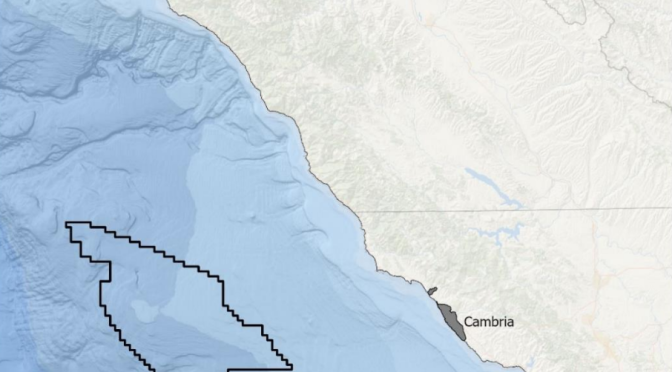The Morro Bay Wind Energy Area covers about 276 square miles off the central California coast.
The California Energy Commission (CEC) adopted a report establishing offshore wind goals that, state officials say, move California one step closer to development of wind energy off the state’s coast.
Preliminary findings in the recently released report, Offshore Wind Energy Development off the California Coast, set planning goals of 2,000-5,000 megawatts (MW) of offshore wind by 2030, and 25,000 MW by 2045, enough electricity to power 3.75 million initially and 25 million homes by midcentury.
California is reportedly home to some of the best offshore wind resources in the U.S., a power source that can play a major role in helping the state achieve 100% clean electricity and carbon neutrality. Offshore wind is a critical clean energy source at night complementing solar energy by providing generation at the end of the day and into the evening as the sun sets, the state said.
“These ambitious yet achievable goals are an important signal of how committed California is to bringing the offshore wind industry to our state,” CEC Chair David Hochschild, said in a statement. “This remarkable resource will generate clean electricity around the clock and help us transition away from fossil fuel-based energy as quickly as possible while ensuring grid reliability.”
The CEC said it developed the report in coordination with federal, state, and local agencies and stakeholders including Tribal governments, fisheries and other ocean users. It is the first of several products the CEC must prepare to create a strategic plan for offshore wind energy development as required by state Assembly Bill 525. It reflects the latest available research on technical potential.
“The success of our state’s climate goals requires all-hands-on deck and we are committed to ongoing consultation with other agencies and those most impacted by the scale-up needed to achieve 100 percent clean electricity,” said CEC Vice Chair Siva Gunda.
CEC staff will next study the economic benefits of offshore wind in relation to seaport investments and workforce development needs. The CEC will also create a roadmap to develop a permitting process for offshore wind energy facilities and associated electricity and transmission infrastructure. The entire plan must be submitted to the California Legislature by June 2023.
Last year, Gov. Gavin Newsom signed an agreement opening the West Coast for development for the first time. As a result of the partnership, in May, the Bureau of Ocean Energy Management released a proposed sale notice?for offshore wind leases off the northern and central coasts in areas designated as most suitable for commercial wind energy activities near Humboldt and Morro Bay.
Plans for renovations to prepare for offshore wind activities are already underway at the Port of Humboldt Bay with $10.5 million in funding approved by the CEC earlier this year. Governor Newsom’s?2022–23 budget proposal?builds on this effort and proposes an additional $45 million for other needed upgrades at waterfront facilities.
The Business Network for Offshore Wind supported AB 525 in 2021 and the planning needed to deploy offshore wind in federal waters off the California coast. BNOW said it has consistently called for California to work towards the maximum offshore wind goal based on National Renewable Energy Laboratory (NREL) and other reports as well as advocated for setting significant goals that will provide industry confidence needed to encourage investments, developing a domestic supply chain.
“The CEC’s approval of a robust Offshore Wind Planning goal of up to 25 GW by 2045 ?is the action the industry has pushed for more than five years,” Liz Burdock, CEO and president of BNOW, said in a statement. “It also marks a significant moment in the path to develop a national floating offshore wind industry. The long-term certainty of a 2045 goal will ?help build investor confidence and attract investments in ports, vessels, and offshore wind manufacturing facilities along the Pacific coast.”


